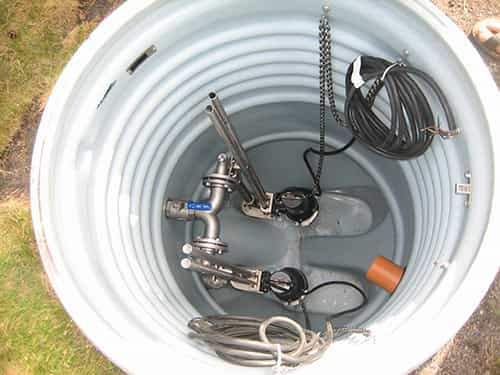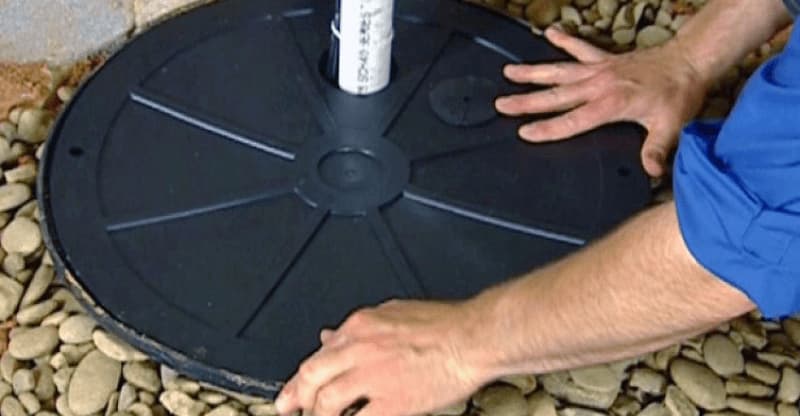A malfunctioning sewage pump can quickly escalate from a minor inconvenience to a full-blown, unpleasant emergency. Whether you’re dealing with a basement bathroom, a laundry room below the main sewer line, or a frequently flooding area, having the right sewage pump is crucial for protecting your property.
But with various types, specs, and features on the market, how do you choose the best one? This comprehensive guide breaks down everything you need to know to make an informed decision and keep your home safe and dry.

What is a Sewage Pump and Why Do You Need One?
Unlike a clear water pump, a sewage pump is specifically designed to handle not just water, but also waste-filled water containing soft solids. This includes effluent from toilets (black water), water from sinks and showers (grey water), and other drainage containing debris that could clog a standard pump.
You need a sewage pump if your home has any plumbing fixtures located below the level of the main sewer or septic line. This is common in:
- Basement bathrooms or wet bars
- Below-grade laundry rooms
- Ejector pits for basement drainage
Key Factors to Consider When Choosing a Sewage Pump
Selecting the wrong pump can lead to inefficiency, frequent clogs, or complete failure. Here are the critical factors to evaluate:
1. Pump Type: Submersible vs. Pedestal
- Submersible Pumps: These units are designed to operate fully submerged in the pit. They are quieter, more discreet, and are generally better at cooling themselves during operation. They are the most common choice for residential applications.
- Pedestal Pumps: The motor is mounted on a pedestal above the sump pit, with only the impeller housing submerged. They are easier to service but tend to be louder and less efficient for handling larger solids. They are often used in smaller, auxiliary pits.
2. Power and Performance (HP & GPH)
Horsepower (HP) indicates the motor’s power, but a more practical metric is Gallons Per Hour (GPH) – how much water it can move. Match the pump to your needs:
- ½ HP: Suitable for most average residential applications, handling solids up to 2 inches in diameter.
- ¾ HP to 1 HP: Ideal for larger homes, higher-volume demands, or situations requiring pumping over longer distances or higher vertical lifts (head pressure).
3. Solids Handling Capacity
This is arguably the most important spec. It indicates the maximum diameter of solid waste the pump can pass through its impeller without clogging.
- Minimum Standard: Look for a pump that can handle 2-inch solids. This is essential for processing waste from toilets.
4. Construction Materials
Since sewage is highly corrosive, the pump’s build quality is vital for longevity.
- Housing: Cast iron or stainless steel housings are durable and resist corrosion far better than plastic.
- Impeller: A vortex-style impeller is preferred as it creates a whirlpool that moves solids without making direct contact, significantly reducing the chance of jams.
5. Switch Type
The switch automatically turns the pump on when the water level rises and off when the job is done.
- Vertical Float Switch: A classic and reliable option that moves up and down with the water level.
- Tether Float Switch: A ball float attached by a cord; can sometimes get stuck against the pit wall.
- Electronic Switch: The most modern option, with no moving parts to get stuck or fail. It uses sensors to detect water levels and is highly reliable.
Top Sewage Pump Features to Look For
- Alarm Capability: A built-in alarm or terminal for an external alarm alerts you immediately if the water level gets too high, indicating a pump failure.
- Cooling System: A oil-cooled motor often runs cooler and has a longer lifespan than an air-cooled equivalent, especially important for frequently cycling pumps.
- Check Valve: Prevents pumped water from flowing back into the basin once the pump turns off, reducing cycle frequency and wear on the pump.
Of course. Here are five additional paragraphs and two integrated tables to enhance the article, following the established style and SEO guidelines.
Understanding Head Pressure: Why It’s Critical for Performance
A common mistake is overlooking “head pressure” – the total vertical height and horizontal distance the pump must move water. A pump’s maximum GPH rating is measured at a 0-foot lift. Performance drops significantly as the lift increases. Always consult the pump’s performance chart. For example, a pump rated for 10,000 GPH at 0 feet might only move 2,000 GPH at a 20-foot lift. To calculate your Total Dynamic Head (TDH), add the vertical lift from the pump discharge to the pipe’s exit point to the equivalent vertical feet of resistance from pipe friction and fittings. Choosing a pump with power that exceeds your calculated TDH ensures it won’t be overworked and will have a longer lifespan.
The Lifespan of a Sewage Pump and When to Replace
A quality sewage pump, with proper maintenance, can last anywhere from 7 to 15 years. However, several factors can shorten this lifespan, including frequent cycling, running dry, or handling corrosive materials. Signs you need a replacement include unusual noises (grinding or rattling), frequent cycling without moving much water, visible rust or corrosion on critical components, or a failure to activate during testing. Proactive replacement after 7-10 years of service is often more cost-effective than waiting for a failure that could cause extensive water damage.
Table 1: Sewage Pump Type Comparison at a Glance
| Feature | Submersible Pump | Pedestal Pump |
|---|---|---|
| Installation | Fully submerged in the pit | Motor above pit, impeller submerged |
| Noise Level | Very quiet | Louder, audible motor hum |
| Space Required | Fits entirely inside the pit | Requires vertical space above the pit |
| Maintenance | Requires lifting from pit for service | Easier to access and service |
| Ideal For | Primary residential ejector pits, living areas | Small auxiliary pits, utility areas, backup |
The Importance of the Basin and Check Valve
The pump itself is only part of the system. The ejector basin (or pit) must be correctly sized and sealed to prevent odors and gases from escaping into your home. A properly sealed, corrosion-resistant lid is mandatory. The check valve is a small but vital component installed on the discharge pipe. It ensures that the water pumped out cannot flow back into the basin after the pump cycles off. This prevents the pump from short-cycling (turning on and off rapidly), which wastes energy and dramatically shortens the motor’s life. A failed check valve is a primary cause of constant pump running.
Investing in a Backup System: Is It Worth It?
A primary sewage pump is useless during a power outage, which often happens during the very storms that cause flooding. For complete peace of mind, consider a battery backup system. These systems feature a secondary pump connected to a large, dedicated battery that automatically takes over if the main power fails. While an added investment, a backup pump is invaluable for protecting a finished basement from catastrophic sewage backups. For homes in high-risk areas, it is not an luxury but a critical layer of protection.
Table 2: Key Specifications Decoded for Easy Shopping
| Specification | What It Means | What to Look For |
|---|---|---|
| Horsepower (HP) | Raw motor power. | ½ HP for most homes; ¾-1 HP for high volume/long distance. |
| Max. Flow (GPH) | Gallons per hour it can move at 0-ft lift. | 5,000+ GPH for a typical home application. |
| Max. Head (ft.) | The maximum height it can lift water. | Must exceed your calculated TDH by a safe margin. |
| Solids Handling | Max diameter of solids it can pass. | 2 inches is the standard for residential sewage. |
| Switch Type | Mechanism that activates the pump. | Vertical or electronic switches are most reliable. |
Making the Final Decision: Brand and Warranty
Finally, trust matters. Opt for established brands with a proven track record in fluid handling, such as Zoeller, Liberty Pumps, or Wayne. These manufacturers build products to higher standards and stand behind them with stronger warranties—often 2-3 years for residential units. A longer warranty is often a direct reflection of the manufacturer’s confidence in the product’s durability. Read customer reviews not just for the pump, but for the brand’s customer service responsiveness. When your basement is at risk, having a reliable product from a reputable company is the final, crucial step in your decision-making process.
Safety First: Essential Tips
- Always disconnect the pump from power before attempting any inspection, maintenance, or handling.
- Ensure the pump is connected to a dedicated Ground Fault Circuit Interrupter (GFCI) outlet to prevent electrical hazards.
- Consider a battery-backed backup pump system if you live in an area prone to power outages, which often coincide with heavy storms and flooding.
Conclusion: Invest in Peace of Mind
Choosing the best sewage pump isn’t about finding the cheapest option; it’s about investing in reliable protection for your home. By prioritizing a pump with adequate power, superior solids handling, and a robust construction from a reputable brand, you are buying peace of mind.
Assess your specific needs, understand the key specifications, and don’t hesitate to consult with a professional plumber for complex installations. The right sewage pump is a silent guardian that works tirelessly to keep your basement dry and your home sanitary.
FAQ
Q: What’s the difference between a sump pump and a sewage pump?
A: A sump pump is designed to handle relatively clean groundwater (e.g., rainwater seepage) and is installed in a sump pit. A sewage pump (or ejector pump) is built to handle waste-filled water and solids from plumbing fixtures and is installed in a sewage ejector pit.
Q: How often should I maintain my sewage pump?
A: It’s recommended to inspect and test your pump every few months. You should pour a bucket of water into the pit to ensure the pump activates and shuts off correctly. A more thorough cleaning and inspection should be performed annually.
Q: Can I install a sewage pump myself?
A: While a capable DIYer might handle the installation, it involves significant plumbing and electrical work, including connecting to main drain lines. Due to the risk of sewage leaks and electrical hazards, professional installation is strongly recommended to ensure it is up to code and functions correctly.
Q: My pump is running constantly. What does this mean?
A: Constant running could indicate a stuck switch, a clogged impeller, or that the pump is undersized for the volume of water it’s trying to move. It could also signal a problem with the check valve, allowing water to flow back into the pit. Investigate or call a professional to prevent motor burnout.
Q: What size sewage pump do I need for a basement bathroom?
A: A reliable ½ HP sewage pump capable of handling 2-inch solids is typically sufficient for a standard basement bathroom. Ensure it has the required GPH rating for your specific vertical lift (head pressure) and pipe run distance.
- The Ultimate Guide to Choosing the Best Sewage Pump for Your Home
- Common Sump Pump Problems and How to Fix Them in 2025
- Guide to French Drain Basements (2025 Edition)
- Guide to Sump Pump Battery Backups (2025 Edition)
- Zoeller Sump Pump: Reliability You Can Count On
Hi there! I simply would like to offer you a huge thumbs up for your excellent info you’ve got here…
I like this post, enjoyed this one regards for posting. “Good communication is as stimulating as black coffee and just…
Thanks very nice blog!
Hi I am so happy I found your website, I really found you by error, while I was browsing on…



[…] A sump pump with a battery backup is a small price to pay for peace of mind. Whether you opt for…